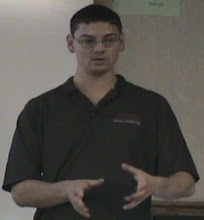Current computers where an expensive resource when we first had them. It took decades until they were cheap and practical enough where you could have one at home. I think the same will be true with quantum computers, they'll be very expensive at first. For this reason I see them being a shared resource at first. In other words it will be something that multiple classical computers share. That sharing could be at the institution level, such as a university having some available much like early computers. It also isn't unreasonable to think that processing time could be rented out on it, much like Amazon's EC2.
One obvious question is how the classical computers will interact with the quantum computer. Nearly all proposals for programming quantum computers explicitly or implicitly make use of Knill's QRAM model [2]. In Knill's QRAM model the classical computer is the master and the quantum computer is the slave:

Things get a little more complicated when you throw in multiple classical computers for a single quantum resource. Each of them cannot have full control of the quantum resource and have it function correctly. However, Knill's QRAM model can be expanded to include a "quantum controller" between the classical computer(s) and quantum resource:
 This has the advantage that all the logic to deal with the clients can be built into the quantum controller. The controller could also talk to the clients through a standardized protocol, meaning that different physical implementations of quantum computers could still be utilized through the same interface. The controller could also do some other things:
This has the advantage that all the logic to deal with the clients can be built into the quantum controller. The controller could also talk to the clients through a standardized protocol, meaning that different physical implementations of quantum computers could still be utilized through the same interface. The controller could also do some other things:- Queue up requests for operations from a client and execute them at once.
- On the fly optimization?
- Deal with disconnected clients at any stage in the computation.
References
[1] W. E. Halal, Technology's Promise: Expert Knowledge on the Transformation of Business and Society, 1 ed. New York, NY: Palgrave Macmillan, 2008.
[2] E. Knill, "Conventions for Quantum Pseudocode," Los Alamos National Laboratory LAUR-96-2724, 1996.

No comments:
Post a Comment